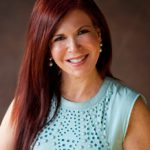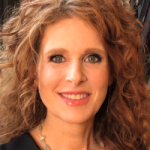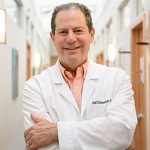Skin cancer is the most common form of cancer in the United States, with an estimated 9,500 new diagnoses every day. And yet, few Americans wear sunscreen. In 2015, a National Health Interview Survey found that only 23.4% of men and 43.6% of women wore sunscreen when out on a sunny day. A more recent survey from RealSelf in 2019 found that only 10% of US adults wear sunscreen daily, and almost half never wear it at all. The FDA is now aware that UVA is primarily responsible for skin cancer and early skin aging. They have added a “broad spectrum” label if the product passes a percentage of UVA protection as compared to the level noted for UVB in the product. This can be a bit vague and may give a false sense of security that both UV wavelengths are sufficiently blocked.
Given this, it’s clear that a change needs to be made. To find out what doctors can do, we spoke with three experts in dermatology: Drs. Amy Lewis, Vivian Bucay and Joel Schlessinger. We asked for their advice on navigating the world of sunscreen products, and how physicians can best encourage their patients to start and keep good sun protection habits.
What separates a good sunscreen from a great sunscreen?
As Dr. Amy Lewis puts it, “A great sunscreen, just like a great employee or friend, will go above and beyond what is normally expected from it.” When it comes to sunscreen, all three doctors agree that SPF is just the starting point. A broad-spectrum formula is essential. Beyond that, added protection against free radicals, infrared radiation and blue light are all considered key features when evaluating a sunscreen. In particular, Dr. Bucay says finding sunscreens that offer protection from blue light is definitely worthwhile. Not all blue light comes from the sun, and fluorescent light, LED lights, and digital devices including flat screen TV’s, smart tablets, smart phones, and computer screens are all sources of artificial blue light. Along with other changes seen in photoaging, blue light has been shown to trigger increases in skin pigmentation that can last longer–up to 3 months–than the pigmentation triggered by UV rays.
Drs. Lewis and Bucay also appreciate sunscreens that include other active ingredients, as they can help enhance sun protection.
“A superior sunscreen may contain DNA repair enzymes (photolyase), antioxidants (vitamin C, green T) and peptides. These products offer additional therapeutic benefits in addition to sun protection, while simultaneously boosting the sun protection,” says Dr. Lewis.
A multitasking ability, such as providing hydration or serving as a primer, is another great feature to look for according to Dr. Lewis.
What questions should dermatologists ask their patients before recommending a sunscreen?
Each dermatologist believes that finding out the personal needs of each patient is an important part of a recommendation. Skin type, acne concerns and potential allergies are all good starting points for discovering your patient’s needs. Lifestyle is also an important topic to discuss. Knowing if patients wear makeup with their sunscreen, if they have outdoor hobbies or if they spend a lot of time in front of a computer can play a big role in what kind of recommendation you should give. An athlete, for example, might need something sweat resistant while an office worker might better appreciate blue light protection. Drs. Bucay, Lewis and Schlessinger also like to ask patients about their preferences, such as whether they prefer tinted or untinted formulations or if they like one texture of sunscreen over another. To this end, Dr. Lewis suggests having samples available in your office that patients can try. That way they can know if they like the look and feel of a product before purchasing it.
Another good point of discussion concerns mineral vs chemical sunscreens. Dr. Vivian Bucay suggested first asking if they understand what a mineral or chemical sunscreen is. Then you can go a bit deeper and see if they have concerns about certain actives. This is an especially important point for Dr. Schlessinger.
“The nice thing about chemical sunscreens is that they tend to cover a wider spectrum and last longer than mineral sunscreens. On the other hand, a recent report from the FDA said they can get into the bloodstream, and not all of them have been thoroughly tested as to what happens when they get there. So if you’re pregnant, you need mineral. No chemical sunscreen for you. The same thing applies to a baby or a young child,” he says.
How can physicians help motivate their patients to start a sunscreen regimen and stick with it?
Despite the evidence linking sunscreen use to reduced rates of skin cancer, most Americans fail to use the recommend amount of sunscreen. For Dr. Bucay, the important thing to focus on when talking with patients is their understanding of the risks.
“The best way to motivate patients to start a sunscreen regimen is to empower them with knowledge through education,” she says. “Good sun protection habits include daily application of a broad spectrum sunscreen on all areas not covered by clothing, seeking the shade; avoiding sun exposure during peak times; sunscreen for the lips, eye area, ears and neck; sunglasses that filter UV rays, sun protective clothing (dark fabrics with a tight weave offer more protection than lighter, loosely woven ones) and an alarm on a smart watch or phone to remind one to reapply sunscreen.”
She also recommended following up with patients at later appointments to see how well they’re able to keep to a regimen, and to discuss any roadblocks that may be hindering them. Dr. Lewis takes a somewhat different approach, believing that it’s sometimes more helpful to focus on the therapeutic and cosmetic benefits of sunscreen rather than the risk of skin cancer. “I find that ‘hiding’ the sunscreen in a tinted moisturizer or an anti-aging cream that they love to use will increase compliance,” she says. She points out that many people are used to only applying sunscreen on hot and sunny days. By including SPF into daily skin care products, a patient can bring daily sun protection into their life without changing their habits as much. She adds it is crucial to reapply sunscreen every 2-3 hours for maximum effect. If reapplication during the day is not possible, or inconvenient because of make-up, other options for sun protection include dabbing the face with a SPF Mineral Brush.
What are some signs that a patient could use a new sunscreen in their regimen?
Non-compliance is a good signal for change. According to Dr. Vivian Bucay, “when a patient comes in for a follow-up visit and they bring their bottle of sunscreen, I ask them how long the bottle lasts. If they tell me more than 4 months for a typical 1.7 oz bottle for the face, I know they are not applying enough or not using it daily or at all.” Then the conversation turns to why. Ask them questions to see what the roadblock might be. Does the product go on too white? Is it inconvenient to apply regularly? Does it cause an unpleasant reaction? After that, a recommendation that better fits their needs can be made.
Should you wait for a patient to ask for a product recommendation, or should you proactively recommend what you believe is best for them?
All three doctors agree that proactively recommending sunscreen in general is the best policy. As Dr. Vivian Bucay puts it, “Daily sunscreen use is nonnegotiable.”
But each dermatologist has a slightly different approach when recommending specific products. Dr. Lewis offers a recommendation to all of her patients and ensures that a sunscreen is in every skin care regimen that she develops. Dr. Schlessinger takes a similar approach with the belief that proactive advice from an expert can help consumers sort through the many options available. On the other hand, Dr. Bucay remarked that while she’s proactive about sunscreen in general, she generally asks if the patient would like a specific recommendation before giving one.
Do you have any particular sunscreen favorites you like to recommend? If so, what are they and what do you love about them?
Eryfotona Actnica SPF 50: Drs. Lewis and Bucay are fans of this all-mineral sunscreen, both citing the inclusion of photolyase, a DNA repair enzyme that restores skin affected by sun damage. The sunscreen is also made with a superfluid emulsion that allows for an easy spread and superior coverage.
Eryofotona Ageless SPF 50: In addition to the broad spectrum coverage, this tinted sunscreen contains peptide Q10 to increase the production of coenzyme Q10 and palmitoyl tripeptide-38 for a reduction in the visibility of fine lines. The formula is also made with blue light, free radical and broad spectrum protection.
HELIOCARE Antioxidant Supplements: Recommended by both Dr. Schlessinger and Dr. Bucay, this supplement works great as a sunscreen booster. While it doesn’t replace a sunscreen, it contains antioxidants to help diminish the effect of UVB, UVA, visible light and infrared radiation. There are also published studies supporting its use with vitiligo, dyschromia and PMLE. Dr. Schlessinger likes the Heliocare Advanced in particular, which contains the addition of nicotinamide. Because of this, he’s found it to be helpful with patients who have actinics and squamous cell carcinoma.
SUNISDIN Softgel Capsules: Similar to HELIOCARE, the SUNISDIN Softgel Capsules use a blend of antioxidants to boost the protection of sunscreen. As Dr. Bucay points out, in a consumer perception study with 34 women over 12 weeks, the women involved noticed an improvement in skin hydration, radiance and firmness along with a decrease in the signs of photoaging.
Sunbetter™ SHEER SPF 56 Sunscreen Stick [V]: A favorite of Dr. Bucay, this all mineral sunscreen works effectively on all skin types across the Fitzpatrick scale without leaving behand an undesirable white residue. The stick is also made with protection against visible light, infrared radiation and pollution.
Sunbetter™ TONE SMART SPF 68 Sunscreen Compact: Similar to the Sunbetter stick, the compact rates highly for Dr. Bucay by providing protection against visible light, infrared radiation and pollution. She also recommends it because “[It has a] universal tint, works well under makeup and feels like a primer,” while being “[e]asy to use for touch-ups during the day.”
ISDIN ISDINCEUTICALS Mineral Brush: Dr. Lewis likes the versatility of this sunscreen brush, which provides broad spectrum, blue light and infrared protection in an easy-to-apply brush. The brush also provides matte, natural-looking coverage.
PRESCRIBEDsolutions Stop the Clock SPF 50: Dr. Lewis recommends this cream as a way to combine sun protection and moisture for patients who want to merge steps in their routine. The formula also contains peptides to stimulate collagen and antioxidants for a defense against free radicals.
Neocutis Journee (with PSP): Using growth factors, cytokines and interleukins, this cream helps fade skin imperfections while providing broad spectrum protection. Along with the Neocutis Micro Day, Dr. Lewis suggests this as a good replacement for a tinted daily moisturizer.
Neocutis Micro Day Daytime Rejuvenating Lotion: This lotion hydrates skin while defending against free radicals with vitamins C and E. Proprietary peptides also helps to minimize wrinkles while a light, universal tint helps to further fade them.
Obagi Professional-C Suncare Broad Spectrum SPF 30: With broad spectrum protection and L-ascorbic acid for an antioxidant defense, Dr. Lewis suggests this sunscreen as a substitute for a primer.
Colorescience Total Eye 3-in-1 Renewal Therapy SPF 35: According to Dr. Schlessinger, “Almost every one of my staff members is on this product.” That’s likely due to its ability to provide a host of benefits to the eyes all at once. It brightens the eye area, provides broad spectrum protection, and refreshes the skin with hydration.
Obagi Nu-Derm System (Includes a sunscreen): For those looking for a brightening regimen that includes sun protection, Dr. Schlessinger recommends the Obagi Nu-Derm Fx System. One version is made for normal to dry skin types, while another is made for normal to oily skin types. Hydroquinone-free, the system includes an SPF 50 broad spectrum sunscreen, and is designed to improve brightness and clarity with 7% arbutin. Plus, the steps in the set are all numbered right on the bottle, making it easy for patients to understand the order of their regimen and follow it.
La-Roche-Posay Anthelios Sunscreen: This sunscreen comes highly recommended from Dr. Lewis, but she warns to pay close attention to the differences between the US and European versions. While their packaging is almost identical, the European version contains Mexoryl XL, which blocks UVA better than it’s replacements in the US version. While she says that both are great sunscreens, she states that “Those with melasma, or other conditions worsened by UVA should opt for the European version.”
Given the importance of sunscreen in preventing skin cancer, it’s vital for dermatologists to work with their patients to help them form and keep good sun protection habits. Whether that’s through more personalized recommendations, more thorough education or simply more honest discussion, there’s much that physicians can do.
How do you talk to your patients about sun protection in your own clinic? Let us know in the comments below and join the conversation.






Leave a Comment